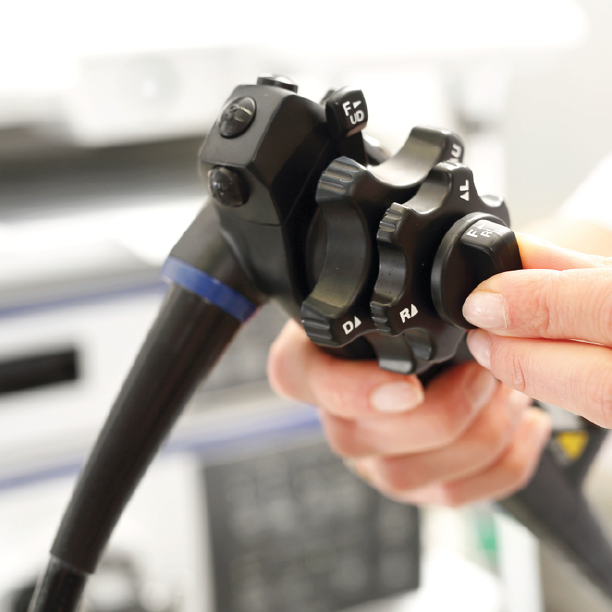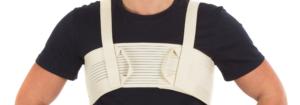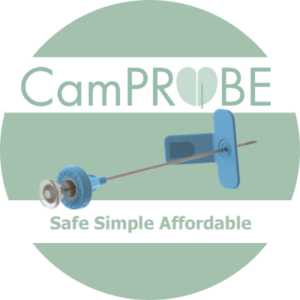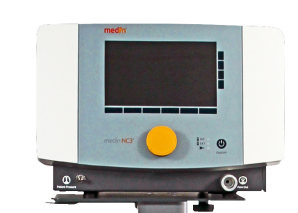LUX range – Frequently Asked Questions

1. Can I really throw the entire product away after use, what about the batteries?
We’re often asked whether ‘everything’ can be thrown away, with a level of disbelief that it’s OK to throw anything with batteries inside away as waste. The light pack in our product contains batteries to power the LED, however these batteries are alkaline only – they don’t contain any of the heavy metals that you’ll find in most batteries in your local store. As clinical waste the applicable directive allows these batteries to be incinerated along with other contaminated waste – thus the entire product is indeed fully disposable.
We’ve also been asked about potential fire risk from shorting batteries. Part of the design brief included short circuiting the battery packs and monitoring the effect. Short circuiting fully charged cells only increased the battery case temperature from ambient (25o C) to 44o C. We also ran a series of scenarios with conductive liquids (as you might find in a waste bag) without seeing any significant temperature increase.
Irrespective of the above, and based on local waste disposal policies you may not wish to dispose of batteries in the waste stream. The light pack can be separated from our products manually if required.
2. There’s a lot of talk about reducing time and cost, yet your products cost more than other similar products on the market. How does this work?
The LUX range of products were developed to address concerns in the market that the then current range of products did not fully meet their needs. The priority in design was performance and safety. All of our products are designed ‘from the ground up’ based on user feedback, drawing on the experience of leading physicians and surgeons in the fields of colorectal and gynaecology. The design goal was to maximise functionality and safety while preserving and enhancing ease of use. The ergonomics of all the products are a result of in use studies, recognising the constraints of products already in market and working to maximise performance.
One of key elements of all our products is an effective illumination system, unobtrusively built into the product.
For medical devices like ours illumination needs to be bright, reliable and unobtrusive
Bright – Light for the LUX range is generated in a light pack tucked away inside the product handle. Power comes from three alkaline batteries, using a superbright LED as the source. The light is directed up an optically clear light guide, formed to ensure that the maximum light exiting is directed to the examination area.
Reliable – Light needs to be there when you want it, provide a constant level high level of illumination during the procedure, preferable independent of any complexity added by external parts, wires etc.
Unobtrusive – There are a number of alternatives to self-illumination on the market. Both add time and cost to the process. There are ‘corded’ and ‘cordless’ systems which still rely on external power sources, and a tangle of wires and sleeves connected, taking time to connect and remove, cleaning and disinfection of parts to be reused. Time which could be spent elsewhere in the department. To minimise time between procedures often duplicate light sets need to be purchased (and maintained – all adding time and cost to the procedures. Illumination is generally via a ‘bright’ light set – positioned at the distal end of the device – a bit like shining the headlights of a car from the back!
Another key element for us is the ability to simply throw the entire product into the clinical waste.
We’re often asked whether ‘everything’ can be thrown away, with a level of disbelief that it’s OK to throw anything with batteries inside away as waste. The light pack in our product contains batteries to power the LED, however these batteries are alkaline only – they don’t contain any of the heavy metals that you’ll find in most batteries in your local store. As clinical waste the applicable directive allows these batteries to be incinerated along with other contaminated waste – thus the entire product is indeed fully disposable.
With all of the LUX products there is no set up time, no time required to connect external components, the product is lightweight, ergonomically designed to ensure maximum ease of use.
At the conclusion of the procedure the LUX product can be simply and safely disposed of in the clinical waste. There is no need to worry about ‘turning it off’ the light pack will slowly run down. There is no recovery of parts, no sleeves to untangle, no wires to disinfect to prevent cross contamination, no battery packs to have on charge (and get lost).
3. How long will the product light remain illuminated?
All our products are designed to remain at full brightness for 30 minutes following activation. This is in excess of the time taken for a standard procedure or observation. However, the illuminator will remain functional for significantly longer than this, with slowly diminishing output.
4. What is the shelf life of products in the LUX range?
All of the products in the LUX range have a shelf life of 3 years.
5. Can the products be reused?
No. The LUX Range are single use devices and must be disposed of after use to avoid the risk of cross-contamination.
6. What is the blue part situated inside the end of the obturator in the PROCTOLUX and SIGMOLUX?
The blue part inside the distal end of the Obturator on the PROCTOLUX and SIGMOLUX is the dynamic component of the ‘Clear View System’. Its function is to slide over the light guide as the Obturator is pulled in and out. When the Obturator is fully inserted into the device, the blue part is situated over the light guide, thus protecting it from obstruction by any faecal matter present in the lower bowel as the endoscope is inserted into the patient.
7. How do I remove the obturator in the PROCTOLUX and SIGMOLUX?
The Obturator on all of the endoscopes needs to be removed in a straight line, ensuring that the cam rides over the light guide smoothly. Twisting the obturator as you remove it can cause it to catch on the light guide making it feel like it has ‘stuck’. If this does happen simply push the obturator back into the scope and withdraw it without rotating the obturator.
To find out more on this range please email us at welcome@henleysmed.com
Latest News
- STERNSHIELD Launched in UK
- CamProbe launches in the UK
- Medin NC3 launched in UK
- New Salter Aire Compressor/Nebuliser
- BiteMe – Perioperative Bite Block Launched in UK
- HEINE DELTA30 & DELTAone Dermatoscope range launched in UK
- CleanPatch®-P Launches in the UK
- Heine Distribution
- EyePro – The success story continues
- CleanPatch V – Surface Repair Patch for Vinyl Surfaces Launched



